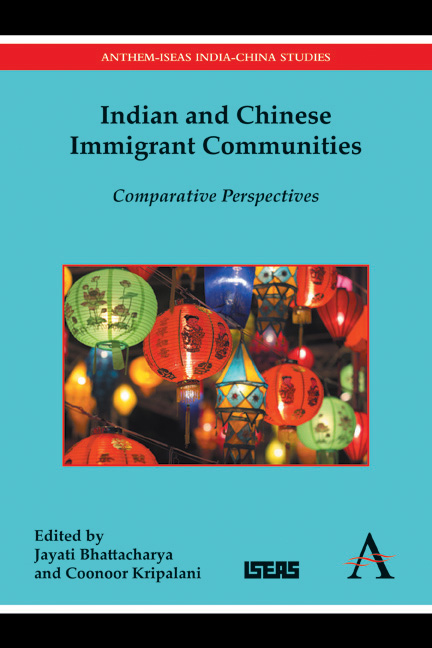Book contents
- Frontmatter
- Contents
- Foreword
- Acknowledgements
- Introduction
- Section I Historical Antecedents and the Question of Nationality
- 1 Blackbirders Refitted? The Journeys of Capitalists and Labourers in the Indian Ocean, 1830s–1930s
- 2 Connecting Diaspora Histories: Indians and Chinese in Colonial Malaya
- 3 Chinese and Indian Diaspora: Some Common and Not-So-Common Cultural Processes
- Section II The Meeting Ground: Indians and Chinese in Southeast Asia
- Section III Indians in China and Chinese in India
- Section IV Across the Globe: Indian and Chinese Diasporas
- Postscript Shifting Worlds and Changing Identities: The Reshaping of the Chinese-Indian Communities in India after the 1962 “Sino-Indian Incident”
- List of Contributors
- Index
3 - Chinese and Indian Diaspora: Some Common and Not-So-Common Cultural Processes
from Section I - Historical Antecedents and the Question of Nationality
Published online by Cambridge University Press: 05 December 2015
- Frontmatter
- Contents
- Foreword
- Acknowledgements
- Introduction
- Section I Historical Antecedents and the Question of Nationality
- 1 Blackbirders Refitted? The Journeys of Capitalists and Labourers in the Indian Ocean, 1830s–1930s
- 2 Connecting Diaspora Histories: Indians and Chinese in Colonial Malaya
- 3 Chinese and Indian Diaspora: Some Common and Not-So-Common Cultural Processes
- Section II The Meeting Ground: Indians and Chinese in Southeast Asia
- Section III Indians in China and Chinese in India
- Section IV Across the Globe: Indian and Chinese Diasporas
- Postscript Shifting Worlds and Changing Identities: The Reshaping of the Chinese-Indian Communities in India after the 1962 “Sino-Indian Incident”
- List of Contributors
- Index
Summary
Introduction
The historical and contemporary migrations of peoples from China and India are major movements of people that have changed the world significantly. Such migrations have shown similar and diverse processes. This paper will discuss some of these processes – namely, migration and remigration, localization, reproduction of traditions, and transnationalism and identity. An important process of transnationalism is the transnational connection between the diasporas and China and India respectively. And in these transnational connections, kinship and religion play important roles, further influencing the reproduction of traditions and identities.
Chinese in global distribution – and I am using the term here instead of diaspora (see below) – are more numerous than people of South Asian origins. But both the Chinese and Indians in global distribution form very significant populations that have a lot of impact worldwide as well as in China and South Asian countries. Both Chinese and Indian populations worldwide deserve serious comparative study, rather than just being studied separately. There is much to learn from such a study about migration, cultural life, economy and ethnicity.
Concept of Diaspora
The concept of diaspora has become popular in the humanities and social sciences since the 1990s. While some scholars still feel uncomfortable about using this term to refer to migrant settlers and their descendants in different parts of the world, the term has by now assumed quite a common usage. In the study of Chinese overseas, Wang Gungwu and other ethnic Chinese scholars from Southeast Asia have expressed reservations about the use of the term for Chinese overseas who have identified with their respective home countries rather than with China. The term evokes the image of the Jewish dispersal and their identification with their Jewish homeland even though, as pointed out by Robin Cohen, diaspora in its original Greek usage was quite positive, being associated with expansion through trade, military conquest and settlement. Most scholars who use the term today to refer to migrant settlers generally do not mean to equate them with the Jewish diaspora.
- Type
- Chapter
- Information
- Indian and Chinese Immigrant CommunitiesComparative Perspectives, pp. 25 - 40Publisher: Anthem PressPrint publication year: 2015



